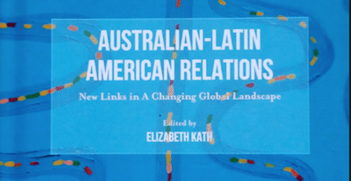Reading Room: Russia's Far East

When most of us think of Russia we think of Moscow, St Petersburg, Crimea and the like; few think of Russia’s Far East and we may only recall that Russia is a Pacific nation when the news reports that Russia is flying military aircraft close to Japanese territory. The task of Russia’s Far East: New Dynamics in Asia Pacific & Beyond by Rensselaer Lee and Artyom Lukin is to explain to us where this region exists in today’s world. This book has a very clear central point: the Far East remains Russian only due to design and determination.
The colonisation of Russia’s Far East during the 16th and 17th centuries occurred in the context of competition between Asian and European powers. The authors detail the ebbs and flows of control and sovereignty as well as the conflicts and treaties that shaped the region from the 17th century onward.
One of the strategic threads from this era extending through to today is the 1855 Treaty of Shimoda and 1875 Treaty of St Petersburg which assigned the southernmost Kuril Islands to Japan. These islands (called the Northern Territories in Japan) were later taken by Russian forces during the closing stages of World War II and remain in Russian possession today. Japan has never accepted Russian ownership of the Kuril Islands and has not signed any treaty with Russian ending this conflict. Japan still strains under the issue of sovereignty over these islands in a way that ripples across its relationship with Russia creating difficulties for trade, diplomacy and military cooperation.
A second strategic thread is Russia’s relationship with China. With the Qing Dynasty in a powerful position in the 17th century, China succeeded in pushing Russia northward in its reach for the Pacific with the signing of the Treaty of Nerchinsk granting China control of the Amur River Basin. Yet during the 19th century, as China came under pressure from Great Britain and other Western powers, Russia saw opportunity in the Far East.
A weakened Beijing created an opening for Russia to push south and gain control over the Amur and Ussuri (Primorsky) regions but also offered the same possibility to Great Britain. Russian and China signed the Treaty of Aigun and the Convention of Peking in 1858 and 1860 respectively which ceded control over vast territories to Russia—including what is now Vladivostok—leaving China’s northeast landlocked. It is notable that no leader of the Communist Party of China has ever recognised the Treaty of Aigun and that a common complaint in China today is that the outcome is unfair as it was created when China was under duress.
The economy of Russia’s Far East is small and largely based on extractive and primary processing industries. It is dependent on subsidies from a national capital that is up to 9,000 kilometres away. These vulnerabilities paired with increasing linkages to China’s northeast leave the region at the limits of Moscow’s control.
More than 110 million Chinese live in China’s northeast, dwarfing the six million across the border in Russia. With Russia’s Far East being rich in raw materials such as timber, oil and food, it is no wonder that trade flows crossing the border into China are increasing. According to the authors, in 2013 China accounted for 27.8 per cent of the total trade of Russia’s Far East, with China receiving 19.4 per cent of total exports and accounting for 47.1 per cent of total imports. Russia is keen to ride the Asian wave to bolster its national economy but must face the challenge of achieving this without the region being more tightly connected to external economies than its own national economy. The book does an admirable job of laying out and analysing the economic and demographic linkages between China and the Russian Far East but similar justice was not done to the region’s political and cultural dynamics.
The treaties signed by China during its colonisation are today viewed as illegitimate; many Chinese with sentimental and strategic mindsets cling to large swathes of Russia’s Far East. For an empire that claims a lineage of more than 4,000 years of pulsating borders, this is not a trivial issue and it deserved much greater exploration by the authors than it received.
The book similarly suffers in its approach to geopolitics. In analysing the future of Russia’s Far East, the authors argue that competition between the United States and Russia is essentially due to anti-Russian lobbies and irrational sentiment rather than competing strategic imperatives. Nobody can claim absolute objectivity but without convincing arguments behind such claims it’s difficult not to sense some biases playing out in this book.
Lastly, for a book explicitly about geopolitics the “geo” element seems to have been ignored almost completely: this is displayed by the fact that only two very rudimentary maps appear in the whole book. More and better maps would have saved the reader from having to bounce back and forth between the book and Google Maps.
This book is a great starting point for those new to this region. It is easy to read and travels quite well from point to point. However, to be more than just a starting point the authors may have benefitted from giving greater focus to geography, including Chinese and Japanese views on the Russian Far East and reconsidering the motivations behind US-Russian competition and confrontation.
Russia’s Far East: New Dynamics in Asia Pacific and Beyond by Rensselaer Lee and Artyom Lukin (Boulder, Lynne Rienner Publishers, 2015).
Chris Farnham works at the National Security College at the Australian National University and has just completed his term as vice-president of the AIIA ACT Branch. He previously worked as AIIA National Office Operations Manager. He has a professional background in security and strategic analysis.





